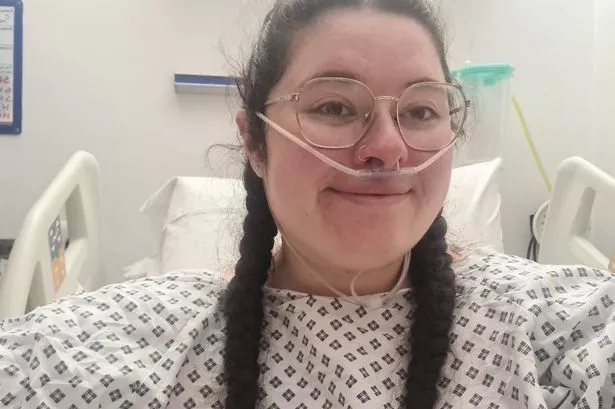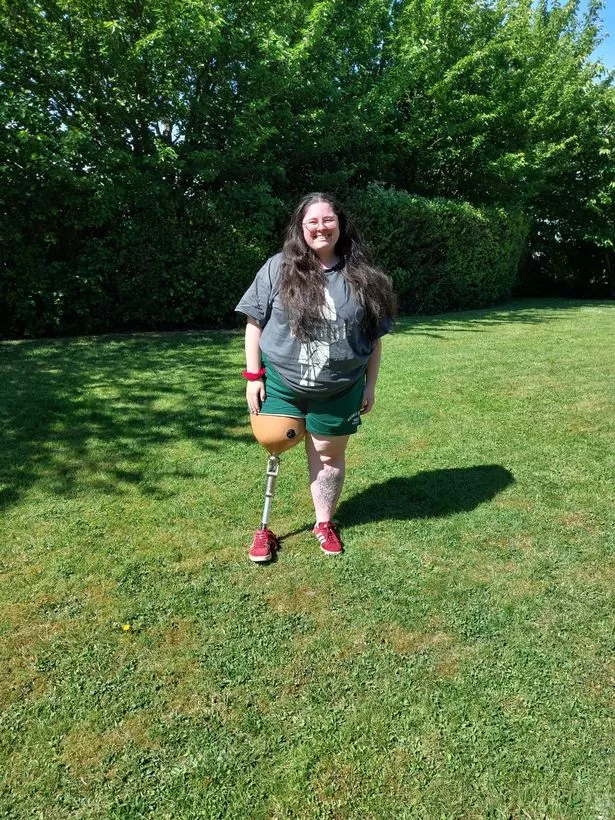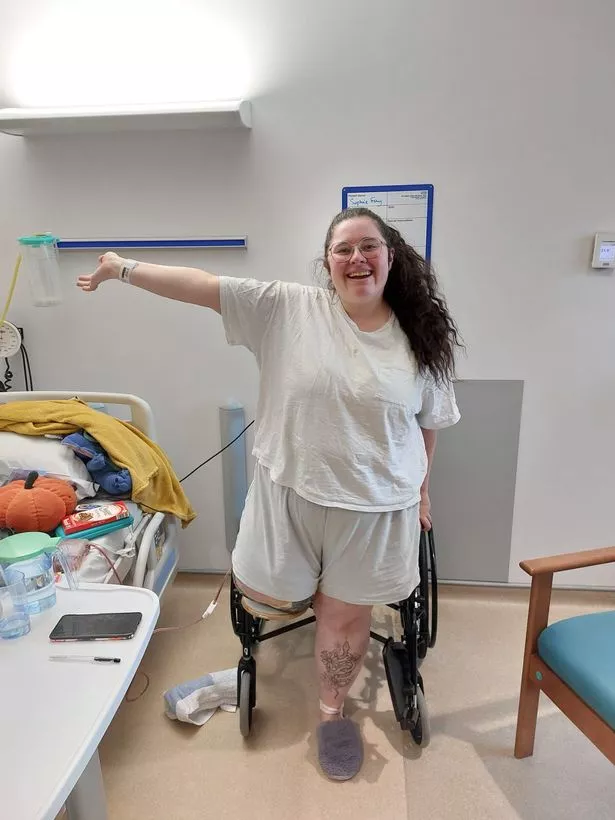Sophie Fay, 26, from Merseyside, learned she had a large tumour that had taken up “the entirety of (her) calf” – although she initially believed it to be due to a muscle injury
11:29, 06 Oct 2025Updated 11:30, 06 Oct 2025
 NHS nurse Sophie Fay has shared her experience to help others(Image: PA)
NHS nurse Sophie Fay has shared her experience to help others(Image: PA)
An NHS nurse had her leg amputated after an “aching” pain she had led to a discovery.
Sophie Fay, 26, from Merseyside, noticed the pain behind her knee on her right knee as she worked as an intensive care nurse in March last year. She initially put the pain down to a muscle injury as she had recently started training with a personal trainer.
But when her calf become “swollen” and “hot to touch,” with her colleagues noting the visible difference. After being alerted to her symptoms and being concerned it could be due to a blood clot or a muscular issue, Sophie’s pains worsened and she sought further help.
Sophie then underwent an MRI scan in November 2024, which revealed a large tumour “taking up the entirety of (her) calf.” The mass was later diagnosed as spindell cell sarcoma of the bone, a rare soft-tissue tumour.
 Sophie noticed pain behind her knee that would lead to a diagnosis (Image: PA)READ MORE: Countryfile’s Matt Baker delivers tragic news minutes in as guest’s mum dies of incurable cancerREAD MORE: Ike Turner Jr dead: Tina Turner’s son dies aged 67 after battling multiple health issues
Sophie noticed pain behind her knee that would lead to a diagnosis (Image: PA)READ MORE: Countryfile’s Matt Baker delivers tragic news minutes in as guest’s mum dies of incurable cancerREAD MORE: Ike Turner Jr dead: Tina Turner’s son dies aged 67 after battling multiple health issues
Sophie was told the only option was an above-the-knee amputation as the blood vessels and nerves were “completely encased” by the tumour, the LiverpoolEcho reported. She underwent the procedure in December last year and is now learning to live with the prosthetic.
Brave Sophie is now sharing her story as part of the Bone Cancer Research Trust’s Bone Cancer Awareness Week, which runs from October 6 to 12, as a way to raise awareness of her symptoms and also prevent others from “falling through the cracks.”
Sophie told PA Real Life: “It was a massive shock but it felt like the best chance of living a normal-ish life afterwards. Going into survival mode helped me to process the diagnosis and stay so positive in the recovery period.
“The only thing I wanted was to not have cancer anymore, and I thought once it’s gone, I can deal with that. You do get the realisation with something like this that our days are numbered and we’re not all invincible.”
 Sophie was diagnosed with a rare tumour (Image: PA)
Sophie was diagnosed with a rare tumour (Image: PA)
Sophie revealed she began working out with a personal trainer in March 2024 but experienced an “aching” sensation behind her knee. “It would just happen when I exercised but I remember going for a walk and I thought the back of my knee was really sore,” Sophie said.
The became “progressively worse” over the following months, until her leg hurt – even during gentle activities. By August 2024, Sophie had been getting ready for a late shift at work and realised her leg appeared “swollen” and felt “warm to touch.”
“I had a visible limp at this time now as well, because it was hurting whenever I walked,” she said. “My colleagues noticed it was swollen, and they suggested it could be a small blood clot in my leg.”
Following a biopsy, Sophie was diagnosed on November 29, 2024, with spindle cell sarcoma of the bone- an extremely rare soft-tissue tumour, according to the Bone Cancer Research Trust. Such tumour typically occur in people over the age of 40 and are extremely rare, accounting for just 2-5 per cent of all primary bone cancer cases, the charity said.
 Sophie experienced an “aching” sensation behind her knee and, ultimately, sought help(Image: PA)
Sophie experienced an “aching” sensation behind her knee and, ultimately, sought help(Image: PA)
Following her amputation, Sophie was later able to resume work in a non-clinical capacity, where she has observed feeling “more emotional” after her ordeal. She is now telling her story to highlight Bone Cancer Awareness Week, organised by the Bone Cancer Research Trust, the UK’s leading charity committed to tackling primary bone cancer.
She continued: “If sharing my story means bone cancer is spoken about more within healthcare, that’s the main thing. I don’t assign any blame or anything, and I think it was really easy to say I was a young girl who pulled a muscle while exercising – I even made that conclusion in my own head.
“It’s very rare, but knowing what to look out for or knowing the signs that put bone cancer apart from any kind of muscular issue would mean people like me don’t fall through the cracks.”
For more information, visit the website for the Bone Cancer Research Trust at bcrt.org.uk.

